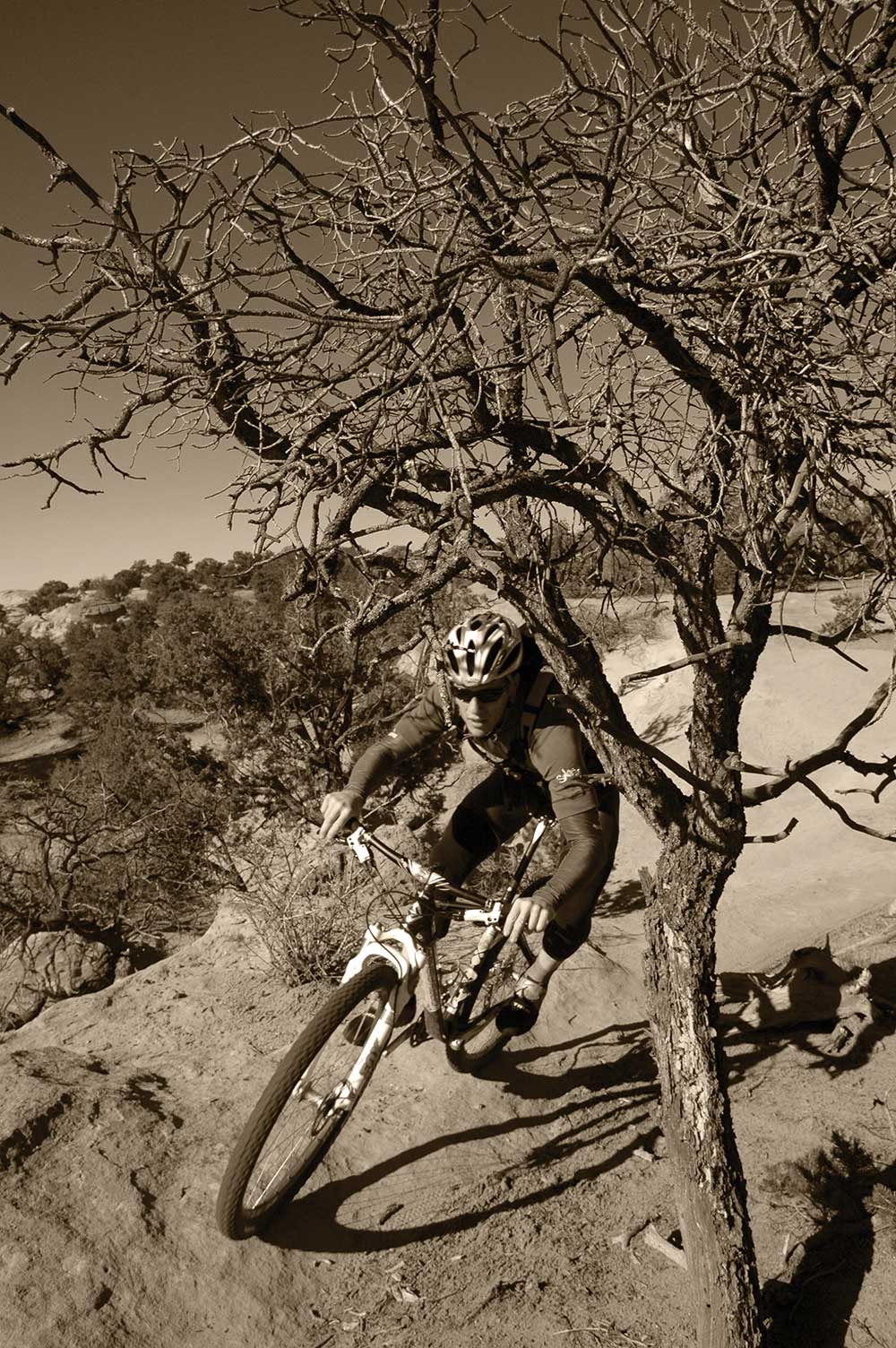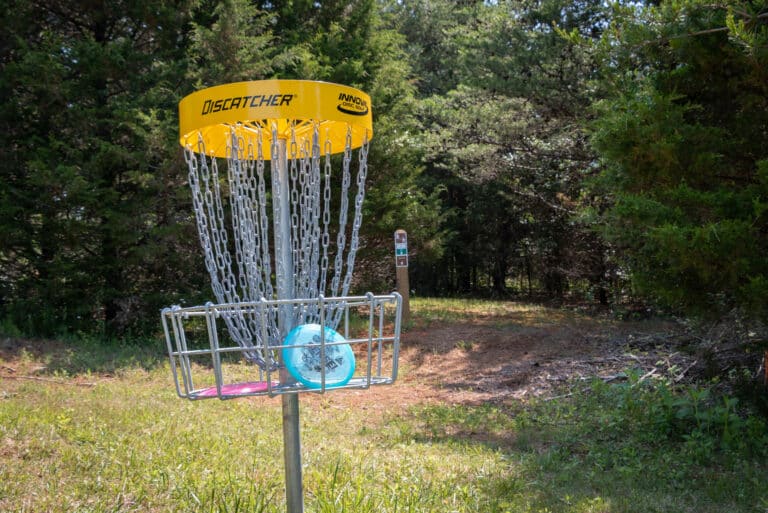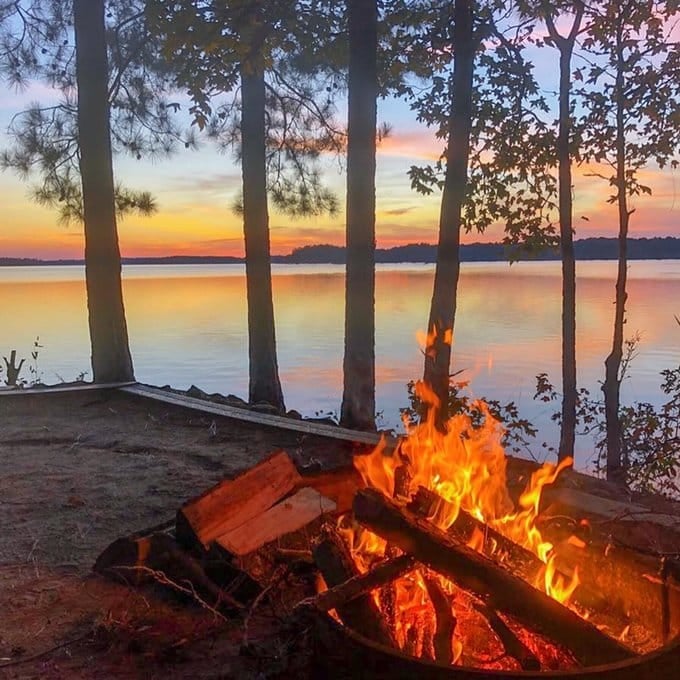These inspiring outdoor adventurers also work to protect the places where we play.
John Beaudet
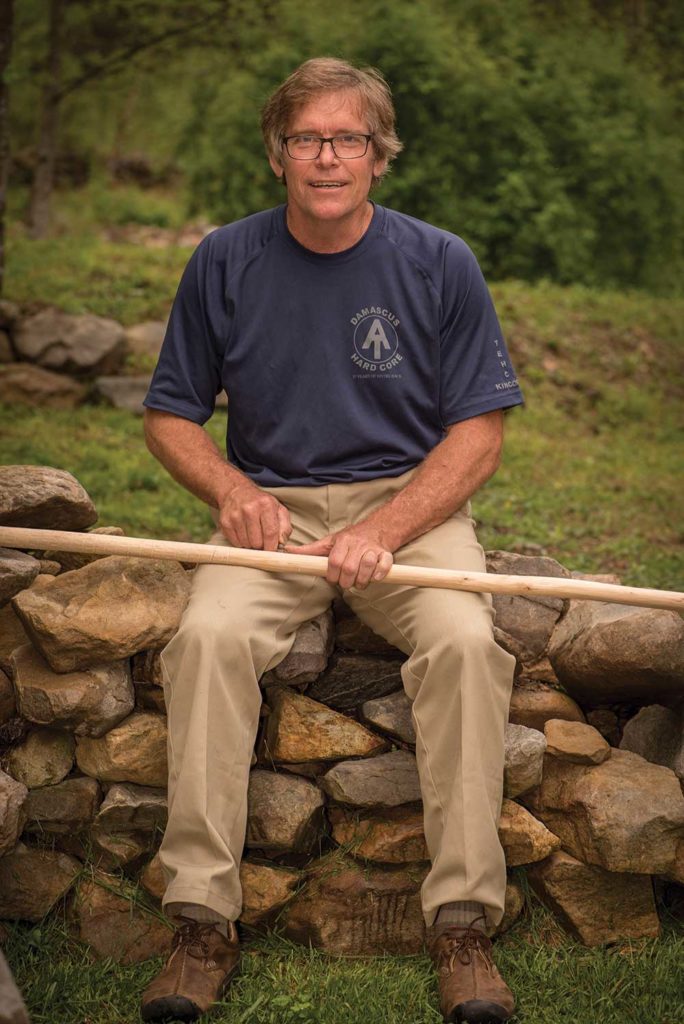
Beaudet spent 10 years backpacking thousands of miles on long trails, including four Appalachian Trail thru-hikes. Once he had worn out his knees, he thought it was time to pay it back. He bought land near Rocky Fork State Park in Tennessee and started a trail crew.
“Trail work is very satisfying,” says Beaudet. “You still get to spend the day out on the trail, but can come home with a feeling of having contributed something to the trail and to others’ enjoyment of it.”
On one of his A.T. thru-hikes, Beaudet hiked a lot with the Romanskis, a family of seven. Beaudet got separated from them near the end of the hike, and on the last day, he tried to catch up and finish with them—but they were not at Katahdin.
Eight years later, Beaudet started up Mount Katahdin on the last day of his fourth A.T. thru-hike, when some folks ahead stepped off the trail to let him pass. It was the Romanskis. They had run out of time and not finished eight years earlier, and were there to finish that very day. “I got to hike the last mountain with them as they finished their A.T. hike after all. What are the chances of that? Special places draw special people to them, and special things happen.”
Beaudet has been instrumental in protecting Rocky Fork State Park, one of Tennessee’s newest and wildest state parks, near the North Carolina-Tennessee border. His trail work, advocacy, and watchdog activism has distinguished him as a grassroots leader. He has spearheaded efforts to keep Rocky Fork wild and undeveloped.
His happiest moments are in the park he helps protect. “Out in the woods, it’s never work. If I go hiking and wind up talking to people about issues, that’s okay; you meet nice people in the woods and enjoy the conversation. The work comes later if it leads to phone calls, letters, and research to do, but that’s at home. In the woods, even if I am building trails all day, I am never really working.”
Mark Miller
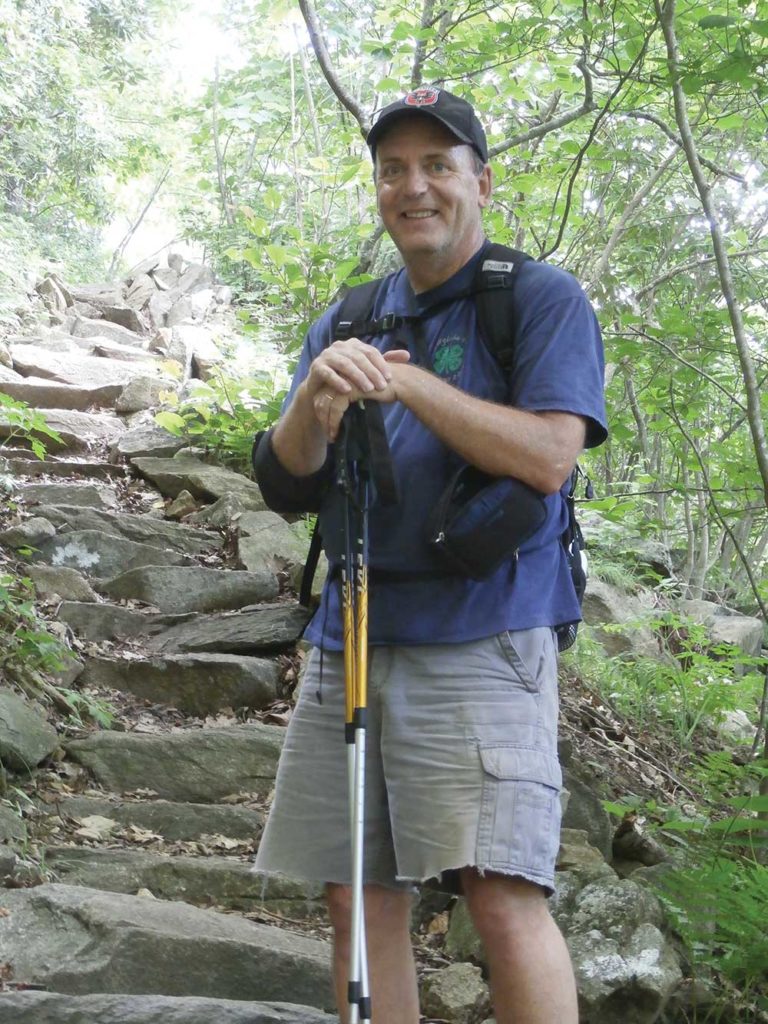
Mark Miller has been an outdoor adventurer since he was 4 and took his first solo-hike in Minnesota. That earned him a good whipping from his parents but also a lifelong love for the outdoors.
“By the time I was thirteen, I was free ranging up to twenty miles from home in what later became known as the Boundary Waters,” says Miller.
Miller got involved in conservation after writing a hiking guide called Wilderness Virginia in the early 90s. “In compiling that book, I was able to travel to all the designated Wilderness in Virginia.”
Soon after publishing the guide, Miller was asked to join the Virginia Wilderness Committee, where he now serves as Executive Director.
His work was instrumental in passing the Wilderness Bill in 2001 protecting The Priest and Three Ridges mountains, and he also helped work on the Omnibus Lands Act signed into law in 2009 protecting millions of acres across the US.
But equally rewarding to Miller is the hard work of maintaining the six-mile Rich Hole Trail in the Rich Hole Wilderness using only hand tools.
“Getting into the woods whether it is for work or pleasure is basically all the same. It is being in the woods and the woods are I place I love to be. It is such an integral part of who I am.”
Beartown Wilderness is one of his all-time favorite places to be. “The area on the summit of Garden Mountain is magical,” he says. A close second is Beartown Mountain in the Clinch Mountain Wildlife Management Area. Both places are tough to get to. You really have to want to make the hike to see these spots as it involves a lot of bushwhacking, but they are worth the effort.”
Sam Evans

You won’t find a more athletically accomplished attorney than Sam Evans. He won the Monster Cross and King of Pisgah mountain bike races in 2013, topped the podium at the Pisgah 111 and Iron Mountain 100K mountain bike races in 2014, and won the 2015 Pisgah Mountain Bike Adventure Race with teammate Dave Wood.
“We went after the checkpoints in a different order than our archrival team, and so only saw them once during the entire day, but then we finished less than a minute before them after more than 8 hours racing,” says Evans.
Evans is also an accomplished whitewater paddler, trail runner, hiker and backpacker, and rock climber.
“One of the reasons I enjoy the activities that I do is that they immerse me in the moment so effectively. I can be in my head. A lot. But when I’m kayaking or when I’m mountain biking or when I’m trail running or setting up camp, all of those things are very in the moment for me. I can come out of the woods realizing I haven’t thought of anything else except for putting one foot in front of the other.”
One of his most memorable moments was arriving by bicycle in D.C. for the Obama inauguration festivities. Evans rode his bike from Knoxville to D.C. in January 2009 to deliver a petition to the Obama transition team supporting the prohibition of mountaintop removal mining waste fills in Appalachian waterways.
Sam Evans grew up in Jasper, Alabama, where there are no wilderness areas. He had to travel 50 miles to visit the Sipsey Wilderness. He recalled vividly the first time stepping into the forest there.
“There was a line of sickly scraggly pines that have grown up from the old clear cut bordering the forest, and there was this magical horizontal line that divided the clear cut into an old-growth hickory and oak forest. Once inside you hear birds and see all kinds of wildlife and quickly you can walk down this canyon to this clear flowing stream, and waterfall and it is just beautiful. That showed me how the choices that we make play out on public lands.”
Evans is a senior attorney with the Southern Environmental Law Center in their Asheville office. His primary focus is on the Nantahala and Pisgah National Forests in Western North Carolina and the Cherokee National Forest in Tennessee.
The stakes have significantly risen with the Trump administration’s environmental policies, one of which is an executive order increasing timber production on public lands and another is a Forest Service proposal to cut public comment and scientific transparency out of many timber projects.
Lynn Cameron
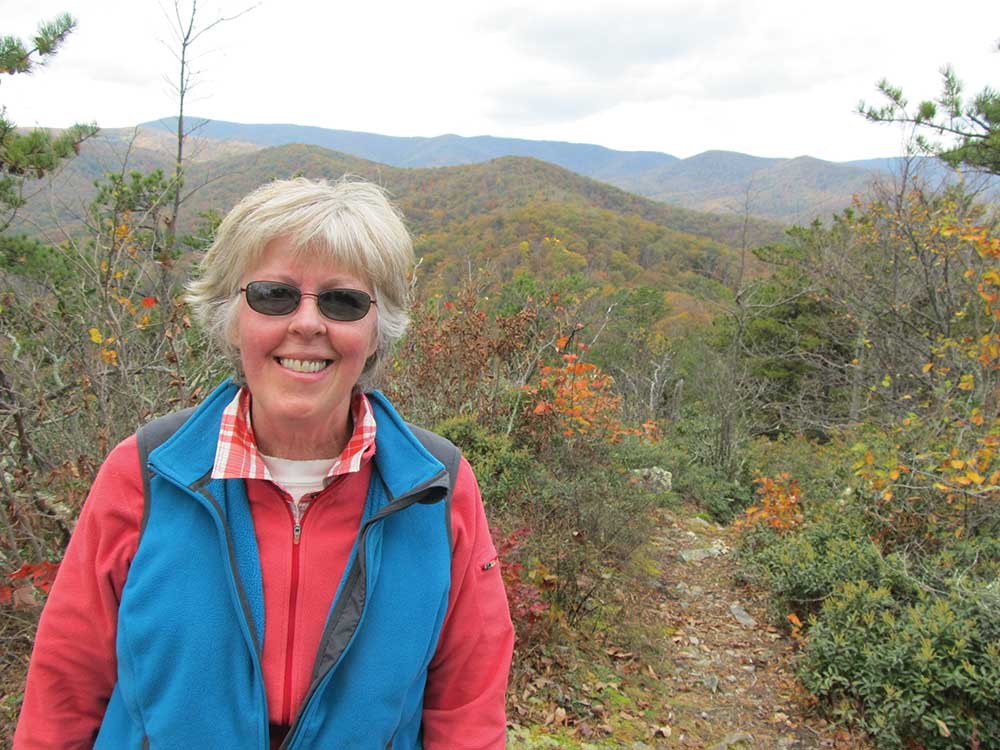
Cameron was called to the outdoors when she was a young girl growing up on a farm in West Virginia.
“I delighted in playing in the forests on our farm. As I grew older, I started backpacking and hiking and made it my business to visit as many Wilderness areas as possible. I was especially drawn to old growth forests.”
She became a full-time volunteer activist after retiring as a professional librarian in 2010. Cameron and her husband are avid hikers and also help maintain the trails on Shenandoah Mountain.
As co-chair of the conservation group Friends of Shenandoah Mountain, Cameron is working to build public support to bring federal legislation to designate 90,000 acres around Shenandoah Mountain area of the George Washington National Forest as a National Scenic Area, which would protect it from certain types of development.
“Some of my best ideas for advocacy come to me while spending time on Shenandoah Mountain. When I’m hiking or viewing wildflowers, I take photos to use in our advocacy efforts. Wandering around on Shenandoah Mountain recharges me and inspires me,” she says. “I work to protect what I love, and I absolutely love doing this work. In fact, it doesn’t even feel like work. My life has meaning and purpose, and I am very happy to live in this way.”
Kristin Davis
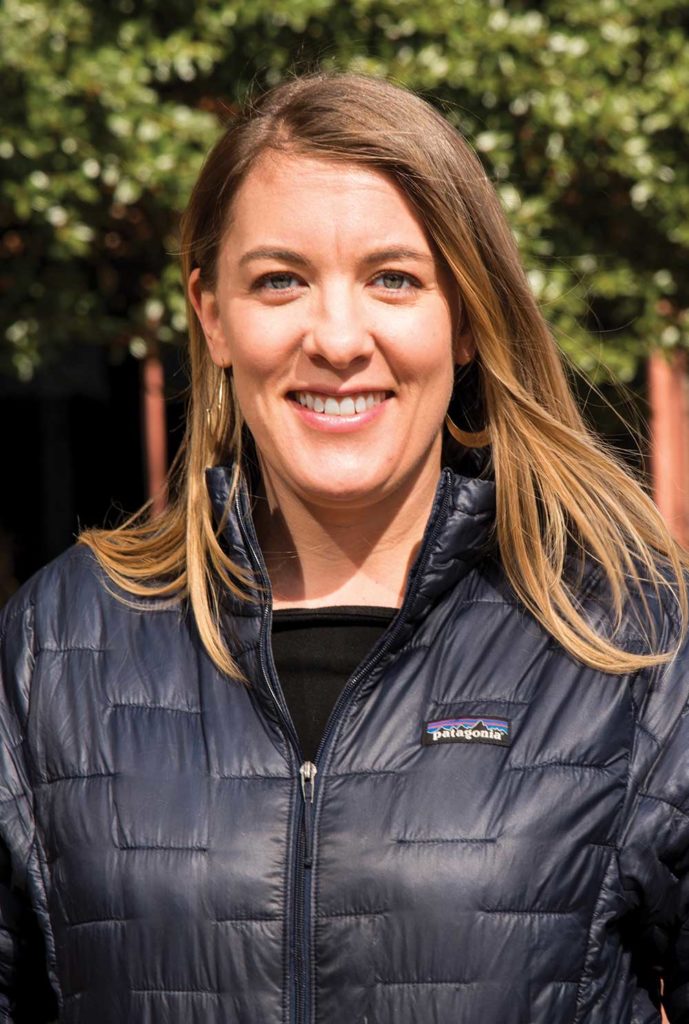
Davis grew up in a small town in West Virginia where kids rode bikes, swam in lakes and rivers, and played in the woods. Today she is an attorney in Southern Environmental Law Center’s Charlottesville office.
“Some folks come to this work because of a deep intellectual interest in some aspect of environmental law or policy. It’s true this field is endlessly fascinating,” says Davis. “But I became an environmental lawyer for a far more basic reason: I go to the woods because hiking through lush forests and mountains and swimming in cool, rocky rivers makes me feel alive.”
Davis is an avid hunter, which may seem unexpected to some. “I realize that hunting isn’t for everyone, and plenty of folks seem surprised to hear that an environmental lawyer likes it,” she says. “But I get to spend a week in the woods I love with my dad and other friends. It doesn’t get much better than that.”
Hunting has a practical value, too. “I’ve saved a lot of grocery money now that I hunt and freeze my own venison. But I had no luck last season, so the freezer is empty.”
Davis focuses much of her time on protecting important resources in the George Washington and Jefferson National Forests—including old growth forests, unique ecosystems, wildlife habitat, water quality, and remote and wild areas of the forest.
“I go to work to help protect these places. It’s just that simple for me. I spent several years as a corporate attorney, so there isn’t a single day that I don’t appreciate how lucky I am to get to do work that I care so deeply about.”
Davis spends as much time as possible immersed in the places she fights to protect. “I’m usually hiking, swimming, fishing, hunting, visiting people, getting firewood, or just looking at things. Being outdoors takes my mind off the stresses of daily life. My world slows down in the woods. It may take a few hours, but eventually my brain slows down too.”
Melanie Mayes
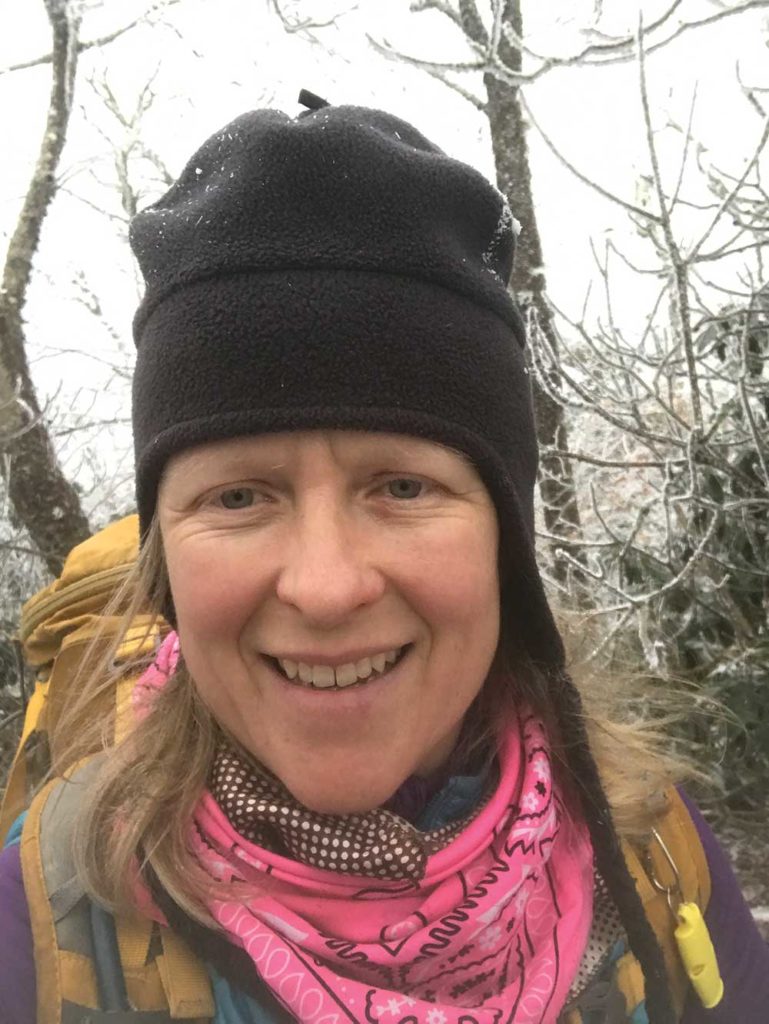
“Half of my parents’ property was taken by a highway when I was a teen,” Mayes recalls. ”There is almost nothing as ugly as a new highway plowing through the forest. And highways bring sprawl: fast food joints and gas stations that chase out local businesses.”
Mayes helped launch WaysSouth, a nonprofit specializing in transportation issues in the Southern Appalachians. WaysSouth formed in response to a proposal to build Interstate 3 from Savannah to Knoxville, which was eventually defeated.
“In our mountains, road construction needs to carefully consider the terrain and route to minimize forest fragmentation, disturbance of streams, and exposure of acid-containing rock formations, so that our tourism-based economy can continue to grow.”
Instead of concrete highways, Mayes prefers dirt trails.
She has hiked over 3,800 miles on the A.T. over the past five years. She regularly hikes the Sugarland Mountain Trail in Great Smoky Mountains National Park with her partner. Mayes hikes 15 miles or more each day, which she considers to be her “moving meditation.”
“It keeps me sane. Hiking gives me the time and freedom from distraction to think through important issues in my life and in my work.”
One of those issues is Corridor K, a proposed highway project in the Andrews-Stecoah area, with two proposed routes cutting across the Appalachian Trail.
“It is frustrating and sad when you love a place, and find it degraded or know it might be in the future.”
Red Terry
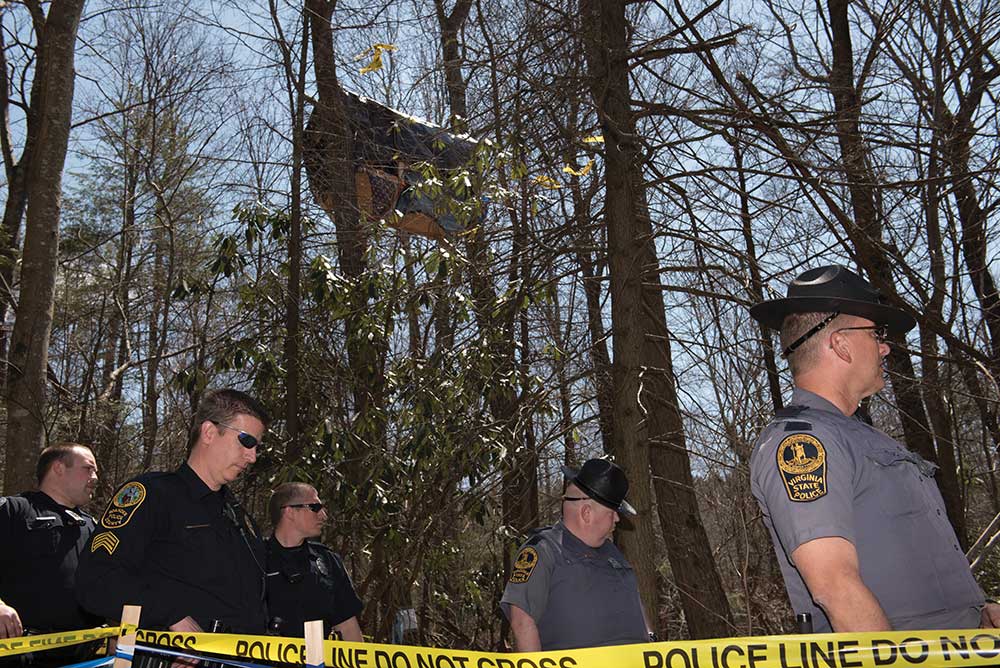
Terry didn’t have to venture far to fight for wild places. She had the fight brought to her in the form of the Mountain Valley Pipeline on her property on Bent Mountain in Virginia.
“I was blissfully ignorant before the pipeline,” admits Terry. “I hate to say that. I lived my life. I enjoyed my woods. I enjoyed my creek. I worked, and then I couldn’t wait to get home. I couldn’t get there fast enough.”
But then the Mountain Valley Pipeline routed directly through her property and seized it by eminent domain. “They cut 13 acres of our property, of our old forest.”
So Terry sat in a tree for five weeks protesting the Mountain Valley Pipeline. She continues to advocate against the pipeline vigorously.
“Every time I see the beautiful trees cut down, it’s like someone tearing my heart out,” she says. “I don’t go out as much as I used to. There’s no where I can go to get away from it on my land.”
